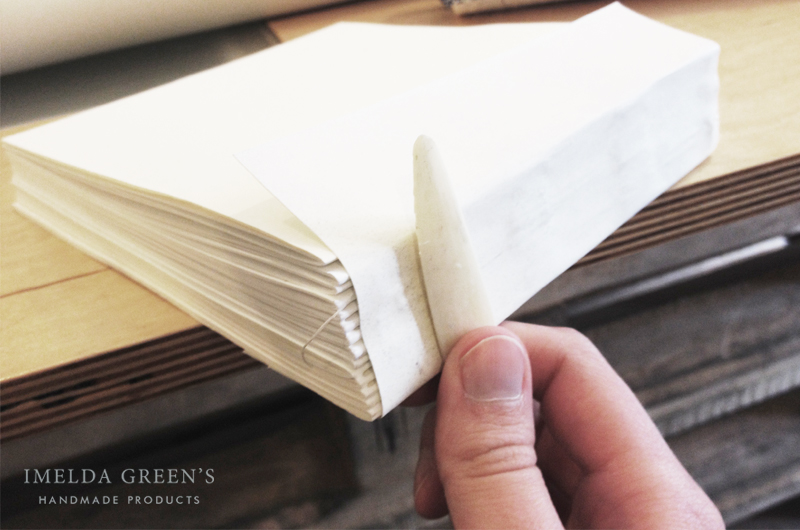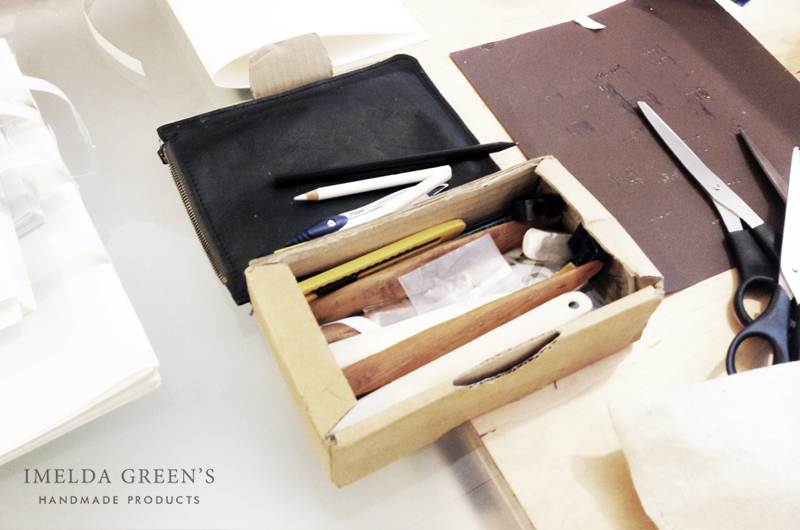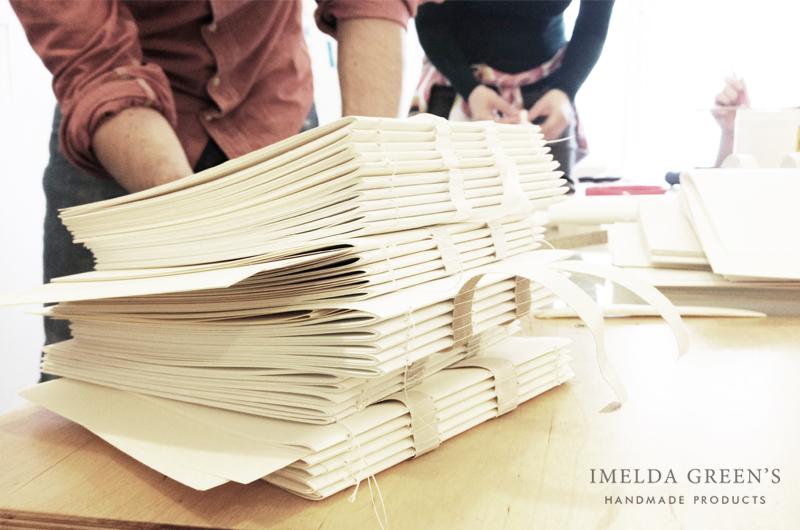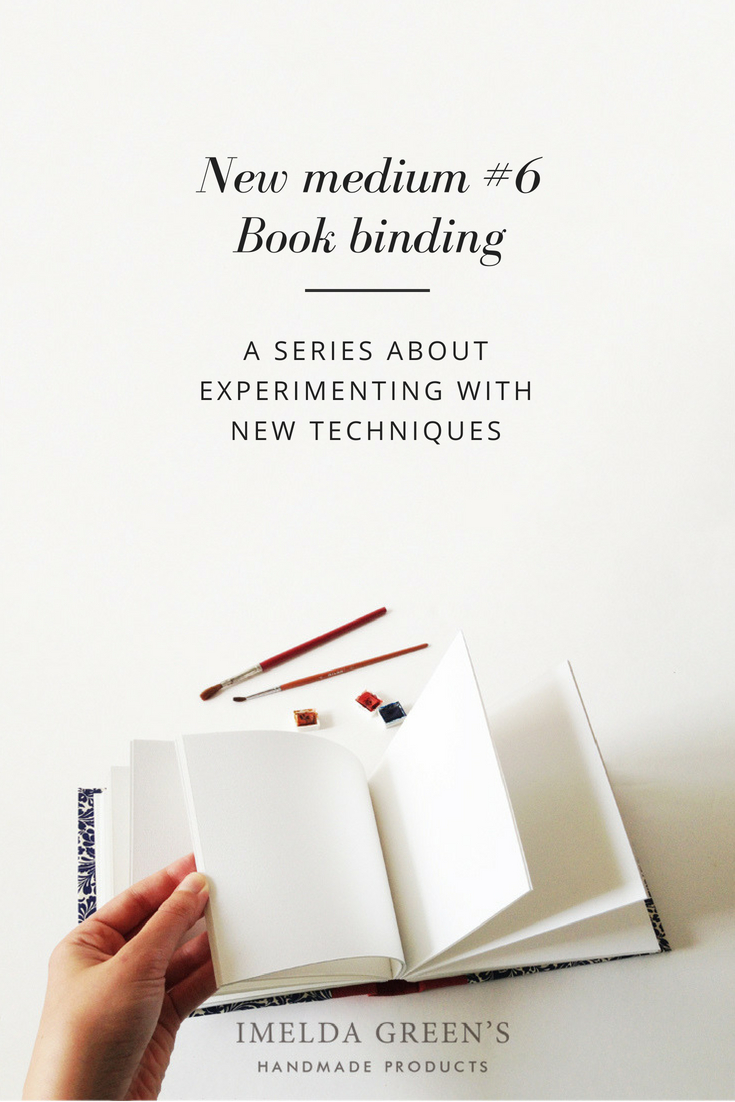New medium #6 – book binding

Imagine that you hate painting in a book. You prefer doodling on individual pieces of paper because you are afraid you spoil it and then the look of the entire sketchbook is destroyed. If you happen to draw in a sketchbook for some strange reason, you use a wire-bound one, so you can just tear the page out if you mess up the drawing. But despite all this, you still go to workshop and bind yourself a real, hard cover sketchbook.
Question: Are you insane?
No, thank you, I’m perfectly fine. I just tried something new. So let’s see what a book binding workshop looks like.
Before you start…
This post will not teach you exactly how to bind a book. I tried to collect as much information as possible, including some tutorial videos, which will enable you to start experimenting at home, but I cannot and nor do I want to include the entire content of the workshop. This post is intended to let you know the anatomy of a book and to explain what happens at a book binding workshop.

So what’s this and how does it work?
If you pick up any hard cover book lying at home, you’ll notice that it consists of several parts: a cover, the flyleaf (which ties the pages to the cover) and of course the pages on the inside. During our book binding workshop we created these elements separately and then put them together into a book.
Before you start, you’ll need some paper for the inside (folded in half), some cardboard (eg. Duplex), needle and thread, a rather great amount of glue and of course some nice wrapping paper or illustration for the cover.
Your first task is to create some book like object from the blank pages. If you pick up a book, you’ll see that, depending on thickness, it consists of small notebook-like elements, which are bound together by the spine. Believe it or not, these little “notebooks” are sewn together – even though I highly doubt that the hard cover books you can purchase on amazon are hand-sewn.

Do it like this: take 2-4 pieces of blank pages (the thicker the paper the fewer to grab), fold them in half, pierce them at 6 points with the tip of a compass, then sew them together. You can find the exact sewing steps in this video.
Once you are ready, the first splashing of glue can commence: use a smaller paintbrush (for wall painting), and apply it on the book’s spine. Even though sewing should be strong enough to keep the book intact, it never hurts to add a bit of extra glue to make it more durable.

The next step is to create the cover. Cut out the spine, the front and back cover separately from your piece of cardboard. The sizes should be a few cm-s larger than the original notebook. After this, stick the wrapping paper or illustration onto the cardboard cover. You can take a look at the exact workflow in this video. Since fixing the wrapping paper onto the cardboard cover requires the entire surface to be glued, it is easier to apply it with a paint roll rather than a brush.
The third and last step is to fit the notebook and the cover together. In this case the flyleaf – which you will cover with glue and fit to the cover – is the first and last page of your notebook. In the case of published books this is often a set of pages covered in repeating patterns.
By this time you are probably covered in glue head to foot but don’t panic, you can peel it off your hands once it’s dry.

Supplies you need
- cardboard or a Duplex board for the cover (should be available in your craft store)
- some decor paper or book binding cloth for the cover – it doesn’t hurt to have some lasting material for this, even spare wallpaper might do
- paper for the inside pages (choose this according to your needs. I wanted to use my sketchbook for painting so I chose 2-300 gsm paper, but this turned out to be a little too thick, it was kind of difficult to sew it together)
- needle, thread, scissors
- paint roller and/or paint brush, lots of gluuuueee (water resistant, eg. this one)
- rulers for measuring, a box cutter and a cutting mat (some spare cardboard from your washing machine’s wrapping will do if you don’t have a professional one. The only point is not to scratch the surface of your kitchen table).

How much time does it take?
My book binding workshop was 2×2,5 hours long but if you work at home on your own then you can probably complete a book in less time. Much depends on how experienced a sewer you are and how thick a book you want to creatre – obviously the thicker the book the more to sew and hence the slower the process.

The verdict
It’s very cosy to work in a sketchbook made by your own hands, not to mention that the paper inside will be exactly how you want it (I chose at least 4 different types of paper in my own book). It’s great that even though it’s a hard cover book I can open it 180° and the spine does not interfere with my painting in any way. However I cannot get it into my head how hand sewn books have a market, as they are so time consuming to create. Márk Somogyi’s workshop was very enjoyable and I’m glad I tried this new technique but I don’t think I’ll create another sketchbook for myself – I am keeping my creative energies for painting.
Have you tried book binding? What were your experiences?



Comment (1)
Erika Lancaster
May 14, 2018 at 7:05 pm
This is awesomeee!!! I’ve tried some very simple book-binding techniques before and this sounds like something I’d love to do! Thanks for sharing!